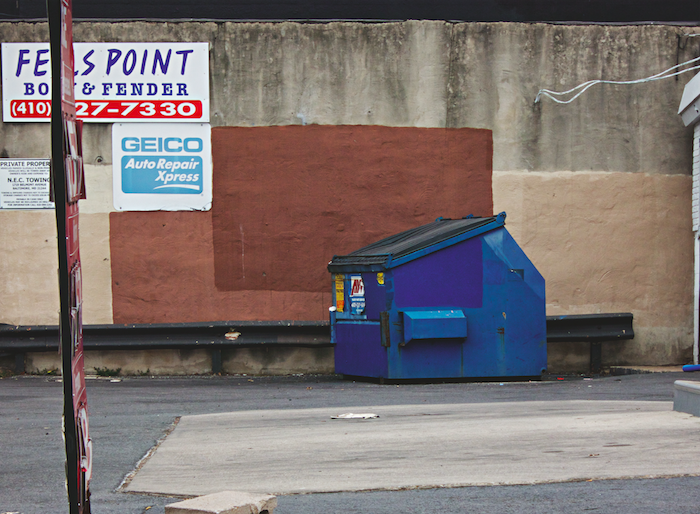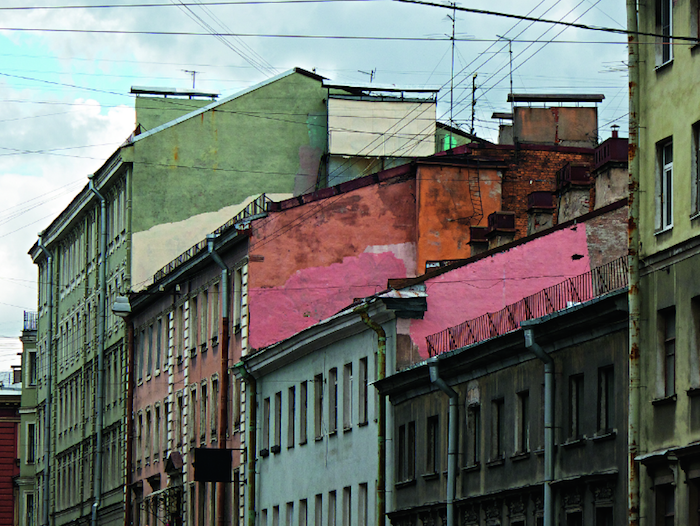
Cover Up, New York
In street art circles, the question of who is allowed to tag what, and how, and why, becomes a much more ambiguous discussion of space, ownership, and aesthetics. What, after all, is a “tag”? This becomes even more interesting when you start to pay attention to buffing.
“Buffing” refers to obliterating tags or street art with a paint roller. It’s a crude and straightforward process, executed without precision by city workers, property owners, or freelance (vigilante, you could say) graffiti-abatement crusaders. The buffer’s motive is not aesthetic creation, but blunt destruction. The implicit belief is that anything looks better than graffiti, including an ill-defined rhombus of industrial-grade paint.
Buffing is a perennial hot topic among street-art enthusiasts, and you might be able to guess exactly how they feel about it. I’m a fan of street art myself, and am friendly with several people who made their name through the form. But I seldom broach the topic of buffing with street artists or their advocates, because the truth is, I secretly enjoy it. If you can set aside (for now) the ideological dimensions of buffing, I think there is a curious, accidental aesthetic merit that results from the practice of obliterating tags. In short, I think buffing can be oddly beautiful.

Cover Up, Baltimore
Matthieu Martin, a French artist currently based in Berlin, thinks so, too. He began documenting examples of graffiti buffing in 2010 (and in late 2015 collected some of this work in a book called Cover Up). There is nothing obviously compelling about the roughly rectangular blotches of color Martin has photographed; if viewed on the street, they wouldn’t be notable (nd obviously the makers of these paint patches were hardly seeking artistic recognition). But look again, focus on the results rather than just the intent, and the examples Martin presents have a cool magic to them.
The typical buffer’s palette tends toward grays and beiges and off-whites. Sometimes the shapes reflect at least an interest in geometric specificity: A dark gray rectangle stacked on a rich white one, forming bold stripes on a bland wall. Sharp, white squares set against dingy concrete. An uneven block of peach, its specific dimensions likely defined by the shape of the tags it covers, perches over a more precise layer of blue-ish slate that presumably buffed out an even earlier batch of graffiti.
Collected, the images start to change the way you see: suddenly the streets seem filled with homages to Rothko and Ryman, a subdued nod toward early Marden here, and a wild gesture at Motherwell there. But Matthieu is deliberate in his choices, and you won’t mistake these buffs for intentional abstractions. He keeps a careful distance that underscores their context (and is always absent of human beings). These are marks made on the city, in public, and with particular intent that’s impossible to miss. And yet, his images suggest, we can make of them something they were never intended to be, simply by the way we choose to see them.
To pass the time during a lengthy commute, Martin tracked the comings and goings of graffiti tags along the route. “One day,” he wrote, “the city decided to remove every single graffiti, by covering them all with grey paint. My routine was broken up, and the route was terribly mute. There was nothing to ‘read.’ It was like death.
“I decided to capture this violence,” he continued. “So the next day I took my camera, and during the trip I took pictures.” At the time, he thought he was documenting a singular moment. But on a trip to North America a few months later, he realized buffing was everywhere: Toronto, Montreal, New York. There were reds and blues and greens. As he continued to take pictures, his framing became increasingly thoughtful and precise, bringing out the subtly noteworthy aspects of particular buffs.

Cover up, St. Petersburg
“Being erased is part of the graffiti process,” he told me. “Before being erased by authorities, you can be erased by another writer. So I was more interested in how this desire for control takes shape—how far the result is from the original desire of cleanness.” He came to address these “cover ups” as a worldwide phenomenon, with its own visual grammars. And he saw that it was worth paying attention to this as a kind of extension of the traditional tagging dialogue with a built environment—to focus not just on the writers, as he put it, but “the eraser too!”
It’s a useful perspective. The erasers’ de facto styles vary with their identities, geographies, particular motives. But you can see visual through-lines in Cover Up that unite their movement. There is a collective identity expressed here: It is yearned-for authority, and in buffing, it has a tag.
To read the entire article, buy a copy of Observer Quarterly 2 at Blurb.
Images by and © Matthieu Martin, courtesy the artsit and Gallery ALB
To read the entire article, buy a copy of Observer Quarterly 2 at Blurb.
Images by and © Matthieu Martin, courtesy the artsit and Gallery ALB
